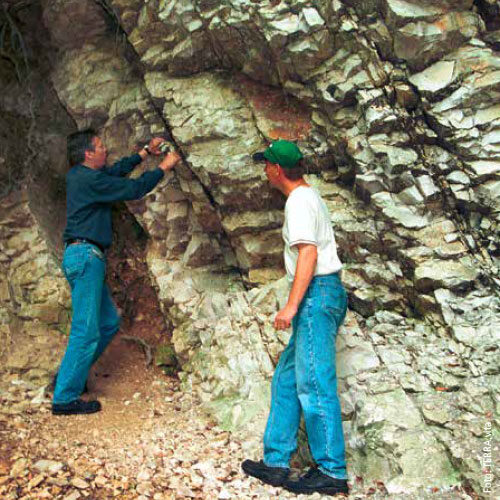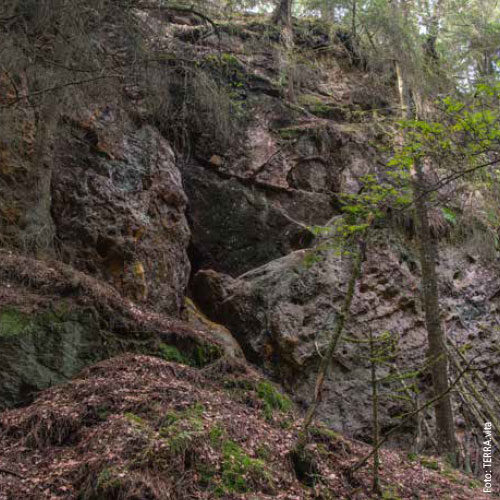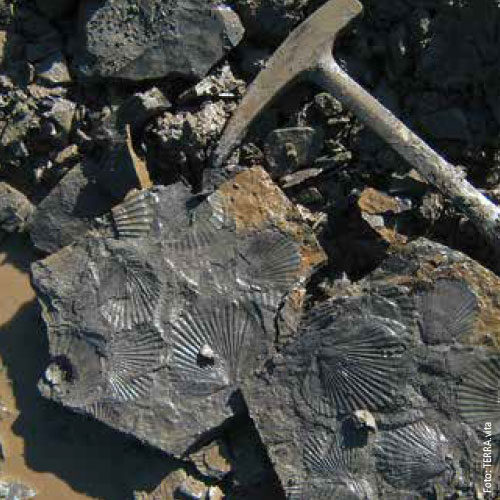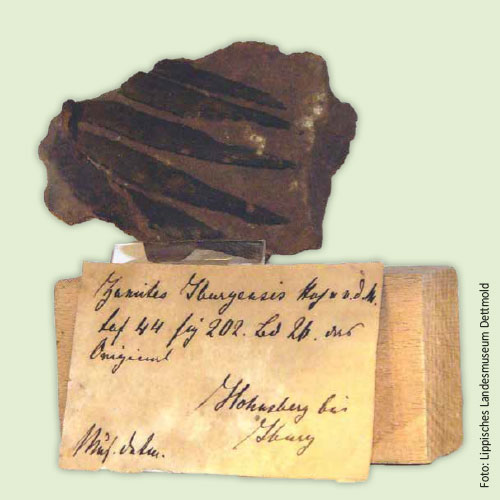The Cretaceous Period
This page is only available for mobile

Shaping the Earth
The Cretaceous Period - an eventful geological age
The 80-million-year-long Cretaceous Period began 145 million years ago. It substantially shaped today’s picture of our earth. The covered-seeds flowering plants (angiosperms) developed, the reptiles reached their peak of development with the giant dinosaurs, volcanism increased, and the earth's plates started to move.
Continents collide
During the breakup of Pangea, the African continent eventually collided with the European. An unimaginably high pressure was released in the unfolding of the mountains, including the Alps and Teutoburger Wald (Teutoburg Forest). The earth's crust broke open and the solidified deposits of the once huge chalk sea were partly pushed up to great heights, often highly faulted and disoriented. At the end of the Cretaceous Period, the dinosaurs, but also ammonites and many other marine animals, died out.
Local traces of the Cretaceous period
During the Early Cretaceous Period, the swamp forests inhabited by dinosaurs were repeatedly (but at long intervals) flooded by the expanding sea. River deltas and shallow water zones with wide sandy beaches formed. Layer by layer, sand settled along the edge of the coastline over the lost forests. Under this heavy load, the forests compacted to stone; the remains of the plants were pressed into coal. The light-colored limestone was created during the Late Cretaceous Period around 100 million years ago by the limestone skeletons of countless generations of sea creatures that sank to the ground and that were often preserved for us as fossils.
Blackboard chalk consists of the fossilized external shells, or “tests”, of unicellular organisms.

Tectonic forces thrust these limestone layers from horizontal to nearly vertically. Traces of a lost world can now be found in the limestone layers.

Occasionally fossilized snails and shells can also be found in the dark-colored sandstone, and the dye “ocher” can be found in cracks and crevices.
What are fossils?
Fossil means "dug out of the earth". Fossils are petrified remains or traces of plants and animals from the geological past. The organisms were covered with mud and water either while they were alive or immediately after their death, so that no decomposition could occur. Under these layers of deposited sediment, they were firmly enclosed, preserved, and eventually pressed to stone. So, like in a picture book, we can now see the primeval world in front of us, from tiny foraminifera (single-celled organisms), snails, or mussels up to huge dinosaur skeletons. Characteristic fossils of a geological layer are called index fossils, and can be used to determine the sequence of the layers (stratigraphy). Without fossils, we would have no knowledge of life in the early world.


It was warm during the Cretaceous Period. Conifers and ferns covered the ancient continent of Pangea. Dinosaurs roamed. Fish, ammonites, mussels, corals, and unicellular organisms lived in the sea. Pangea gradually broke apart. Flowering plants and mammals appeared. A great catastrophe ended the Cretaceous Period. The dinosaurs died out. How do we know? Geologists have found many clues and traces for this, for example – fossils.

Intensive geological investigations of the Hohnsberg near Bad Iburg took place as early as the 19th century. Numerous fossils were found there, such as this section of a palm fern from the Cretaceous Period. The original fossil “Zamites iburgensis” is in the Lippisches Landesmuseum in Detmold.
